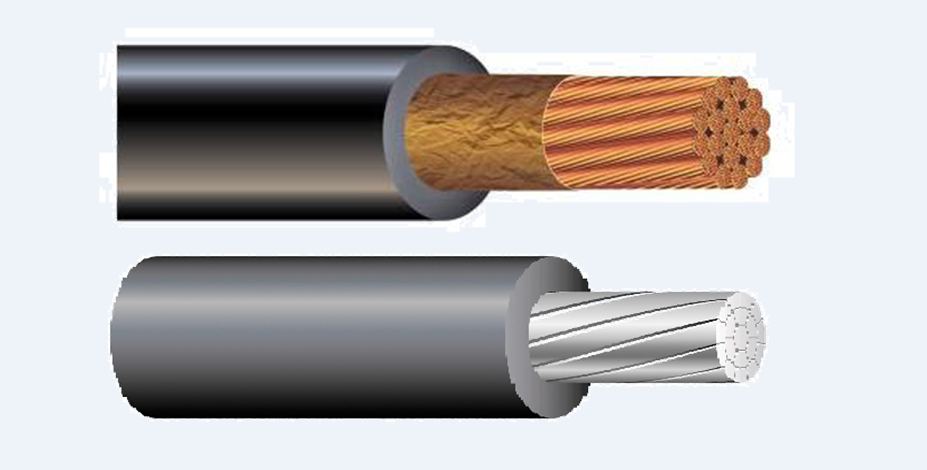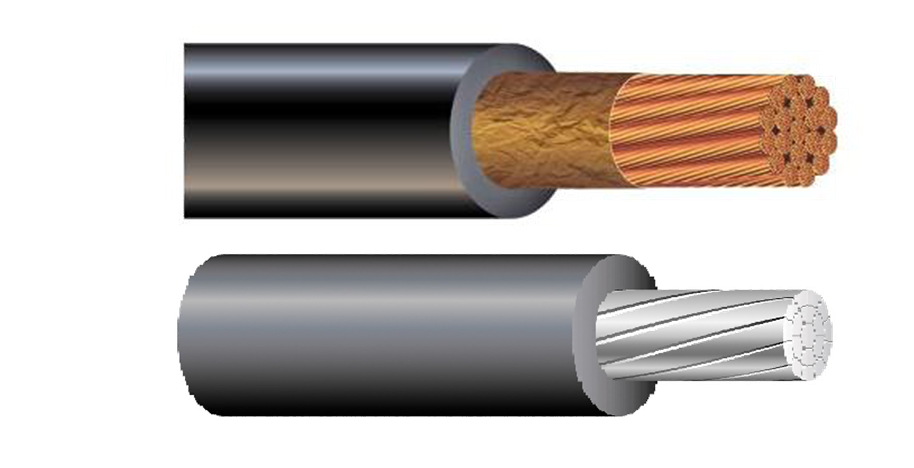Aluminum Alloy Cable VS Copper Cable

Aluminum Alloy Cable VS Copper Cable
The aluminum alloy power cable is a new type of material power cable invented by AA8030 series aluminum alloy material as a conductor by using special compaction technology and annealing treatment and other advanced technologies, while the copper cable is an electric cable with copper material as its conductor, which is commonly used nowadays. Aluminum alloy cable is a kind of cable that adds trace elements as conductors based on ordinary aluminum. Although it is an upgraded version of the pure aluminum cable, it still has obvious disadvantages compared with copper cable.

Aluminum Alloy Cable VS Copper Cable
Aluminum Alloy Cable Has Weak Corrosion Resistance
The corrosion of the cable conductor is mainly the electrochemical corrosion of metal, that is, the electrolytic battery caused by the interference of the original battery or stray current occurring on the metal surface. Magnesium, copper, zinc, silicon, and other elements are added to the production process of aluminum alloy cable to improve its creep resistance, and the heat treatment process is also added.
The operating conditions of the cable are complex, and the aluminum with lower electrode potential in the environment containing electrolytes is different from other metal elements added, which leads to the formation of the current pathway leading to electrochemical phenomena such as hole erosion and crack corrosion.
Aluminum Alloy Cable Has Poor Resistance To High Temperature
The melting point of copper is 1080℃, while that of aluminum is only 660℃. Obviously, the copper conductor is a better choice for fireproof cable. In case of fire, the temperature in the central environment can rise to more than 750℃, and the cable must be able to maintain the basic function of the power supply to build the life support line.
Obviously, when the temperature of the fire field is higher than the melting point of aluminum alloy and aluminum, no matter what thermal insulation measures are taken, the cable conductor will melt in a short time and lose the conductive function, which will affect the safe evacuation of fire site personnel seriously.
The Joint Failure Risk Of Aluminum Alloy Cable Is High
The cable operation experience shows that 80% of faults occur at the joint. Copper has unparalleled advantages over aluminum and aluminum alloy. Copper oxide produced by the oxidation of copper joints is an excellent conductor and can still guarantee the electrical connection performance of joints and terminals. Aluminum oxide produced by the oxidation of aluminum and aluminum alloy joints is an insulator, and its hard texture and strong adhesion make it difficult to form a good conductive contact, which is easy to cause hot contact.
Aluminum Alloy Cables Occupy More Channel Resources
Under similar energy consumption conditions, the aluminum alloy cable cross-section must be larger than the copper cable above two specifications to achieve a similar load flow. The cable channel resource is an important part of the construction of the urban cable network, and the increased conductor section has a serious impact on the cable laying and the cable channel structure size.
If an aluminum alloy cable is selected for the inner laying of the discharge pipe, the diameter of the discharge pipe must be enlarged to more than 1.6 times the diameter of copper cable laying, which increases the cost of civil construction of the cable.
Besides that, the expanding scale of civil construction has increased the occupation of land, which is not feasible under the condition of the increasing shortage of urban underground resources.
Conclusion
Thank you for reading our article and we hope it can help you to have a better understanding of the aluminum alloy cable and copper cable. If you want to know more about the aluminum alloy cable and the copper cable, you can visit http://www.samaterials.com for more information. They have over two decades of experience in the manufacture and sale of various aluminum alloy cables and copper cables.
{{item.content}}
LEVE A REPLY
{{item.children[0].content}}
{{item.content}}






